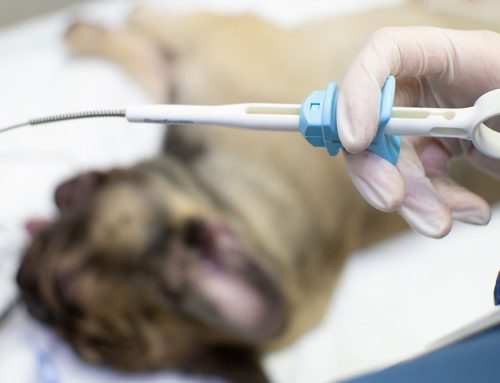The thyroid gland plays a crucial role in regulating your pet’s metabolic rate, and conditions that affect this gland can cause significant health complications. Thyroid disease is the most common hormonal imbalance in pets, and our Boca Midtowne Animal Hospital team provides information about this concerning issue to help you recognize the problem should your pet be affected.
Thyroid disease overview in pets
The thyroid gland is located in the neck and has lobes on either side of the trachea. The gland is controlled by the pituitary gland, and produces hormones that affect multiple body systems. Thyroid disease is common in cats and dogs, but affects each species differently. Thyroid issues that affect pets include:
- Hypothyroidism — Dogs are most commonly affected by an underactive thyroid gland.
- Hyperthyroidism — Cats are most commonly affected by an overactive thyroid gland.
Hypothyroidism in dogs
Hypothyroidism is most common in middle-aged and elderly dogs. Certain breeds, including golden retrievers, Doberman pinschers, Irish setters, Great Danes, dachshunds, and boxers, seem predisposed to the disease. Other information about hypothyroidism includes:
- Causes — In dogs, hypothyroidism is caused by:
- Lymphocytic thyroiditis — This condition, which is the most common cause of hypothyroidism in dogs, is thought to be immune-mediated, meaning that the dog’s immune system recognizes the thyroid tissue as foreign and attacks the gland.
- Idiopathic thyroid gland atrophy — In this condition, normal thyroid tissue is replaced by fat tissue.
- Cancer — In rare cases, hypothyroidism is caused by a malignant tumor.
- Signs — When the thyroid gland can’t produce adequate thyroid hormone, the dog’s metabolic rate slows, which affects many body organs. Signs include:
- Weight gain without an increased appetite
- Lethargy and exercise intolerance
- Cold intolerance
- Dry, dull hair coat and excessive shedding
- Thin hair coat that doesn’t regrow when clipped or shaved
- Increased dark skin pigmentation
- Increased skin and ear infections
- Facial skin thickening
- Infertility
- Complications — Weight gain can lead to obesity, which predisposes pets to several health complications, such as cancer, kidney disease, and diabetes. In addition, hypothyroidism can lead to abnormal heart rate and arrhythmias and, sometimes, neurologic problems that cause muscle weakness, facial paralysis, and head tilt.
Hyperthyroidism in cats
Older cats are at greater risk for hyperthyroidism, which is characterized by thyroid hormone overproduction that leads to an increased metabolic rate. Siamese, Burmese, Persian, Abyssinian, and Himalayan breeds seem to have a decreased disease risk. Other information about hyperthyroidism includes:
- Causes — In cats, hyperthyroidism is caused by:
- Nodular hyperplasia — In most cases, hyperthyroidism is caused by a benign thyroid enlargement. The exact reason is unknown, but may involve deficiencies or excesses of certain compounds in the cat’s diet and chronic exposure to thyroid-disrupting chemicals in their food or the environment.
- Cancer — In rare cases, hyperthyroidism is caused by a malignant tumor.
- Signs — When the cat’s thyroid gland is overactive, their metabolic rate increases and causes signs that include:
- Weight loss despite a healthy or increased appetite
- Increased thirst and urination
- Increased activity or irritability
- Vomiting and diarrhea
- Elevated heart rate
- Unkempt hair coat
- Complications — The cat’s persistently elevated heart rate can lead to hypertension that may cause retinal detachment and result in sudden blindness. In addition, the cat’s heart can enlarge and thicken to meet the increased metabolic demands, causing thyrotoxic cardiomyopathy.
Thyroid disease diagnosis in pets
Thyroid disease is detected by taking a pet’s blood sample to measure particular thyroid hormones, including:
- Total thyroxine (TT4) — Hypothyroidism is suspected in pets who have a low TT4 and suggestive clinical signs, while hyperthyroidism is suspected in pets who have a high TT4 and suggestive clinical signs.
- Free T4 — To confirm the diagnosis, the pet’s free T4 levels are usually tested. A low free T4 indicates hypothyroidism, and a high free T4 indicates hyperthyroidism.
Hypothyroidism treatment in dogs
Hypothyroidism can be treated, but not cured, and dogs must receive thyroid replacement hormone for the remainder of their life. The dog is started on a standard dose based on their weight, and their thyroid hormone levels are retested in about a month to determine if their dose is correct. A blood sample must be taken at least six hours after medication administration for an accurate test. The dog’s tolerance for the thyroid replacement hormone may change over time, and their dose may need adjusting.
Hyperthyroidism treatment in cats

Several treatment options are available to address hyperthyroidism, including:
- Oral medications — Lifetime medication administration to control the overactive thyroid gland can be used to treat hyperthyroidism. Potential side effects include vomiting, lethargy, decreased appetite, fever, liver damage, and anemia.
- Surgical removal — Surgically removing the affected thyroid glands can cure the disease.
- Radioactive iodine — Radioactive iodine therapy destroys the abnormal thyroid tissue without endangering other organs and typically involves hospitalization for one to two weeks.
- Prescription diet — An iodine-limited diet can resolve clinical signs and lower thyroid hormone levels, but the cat must eat only the prescription diet food for this method to be successful.
Thyroid disease can be problematic for pets, but can be easily managed when detected in the early stages. If you would like your pet screened for thyroid disease, contact Boca Midtowne Animal Hospital, so we can ensure their thyroid levels are normal.








Leave A Comment